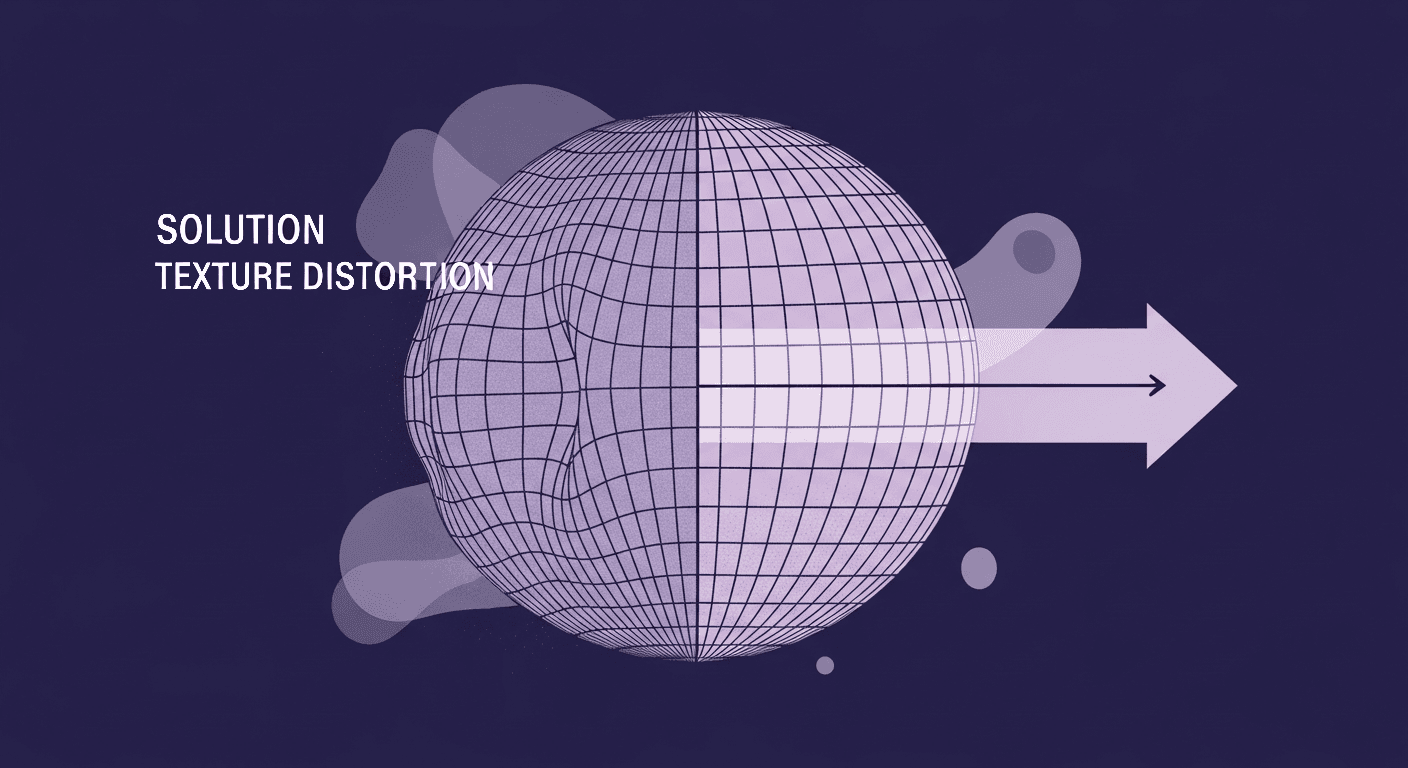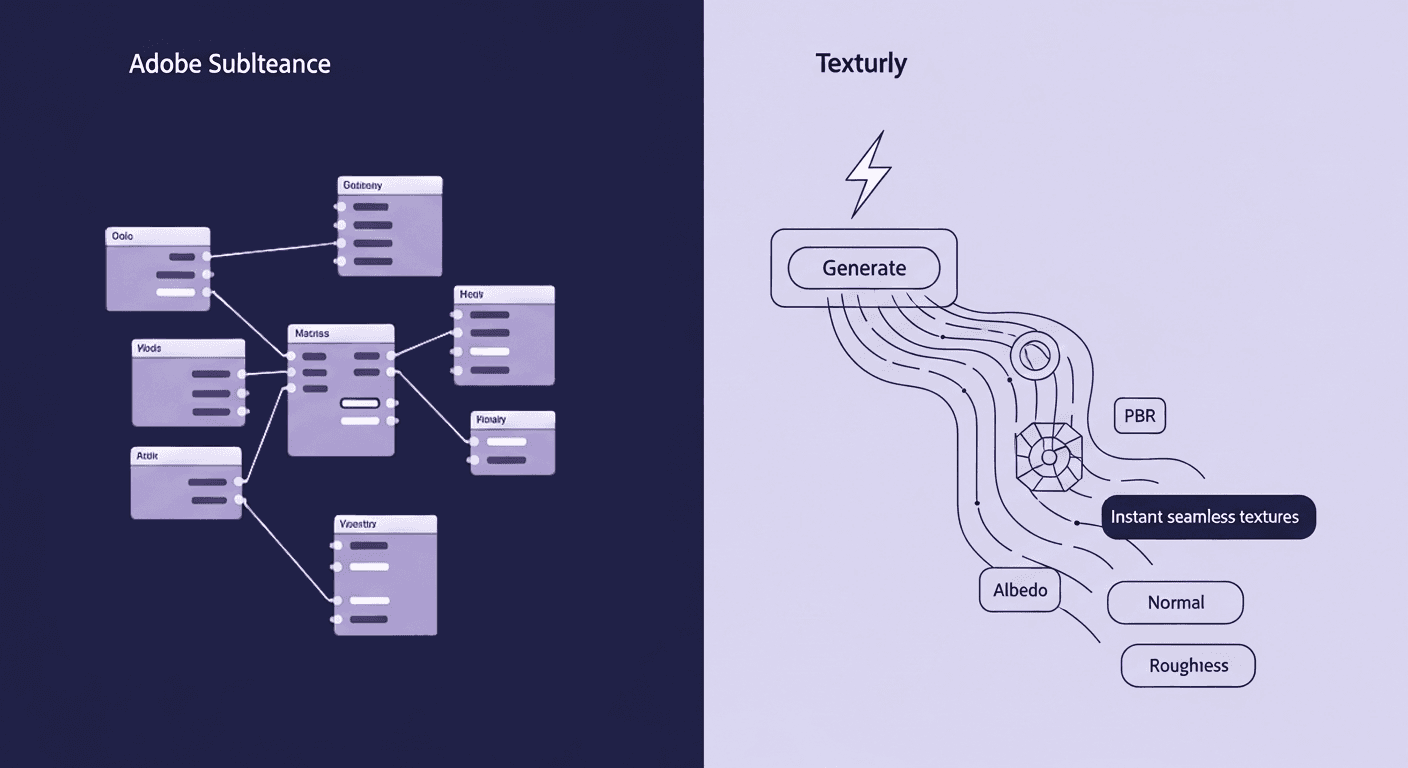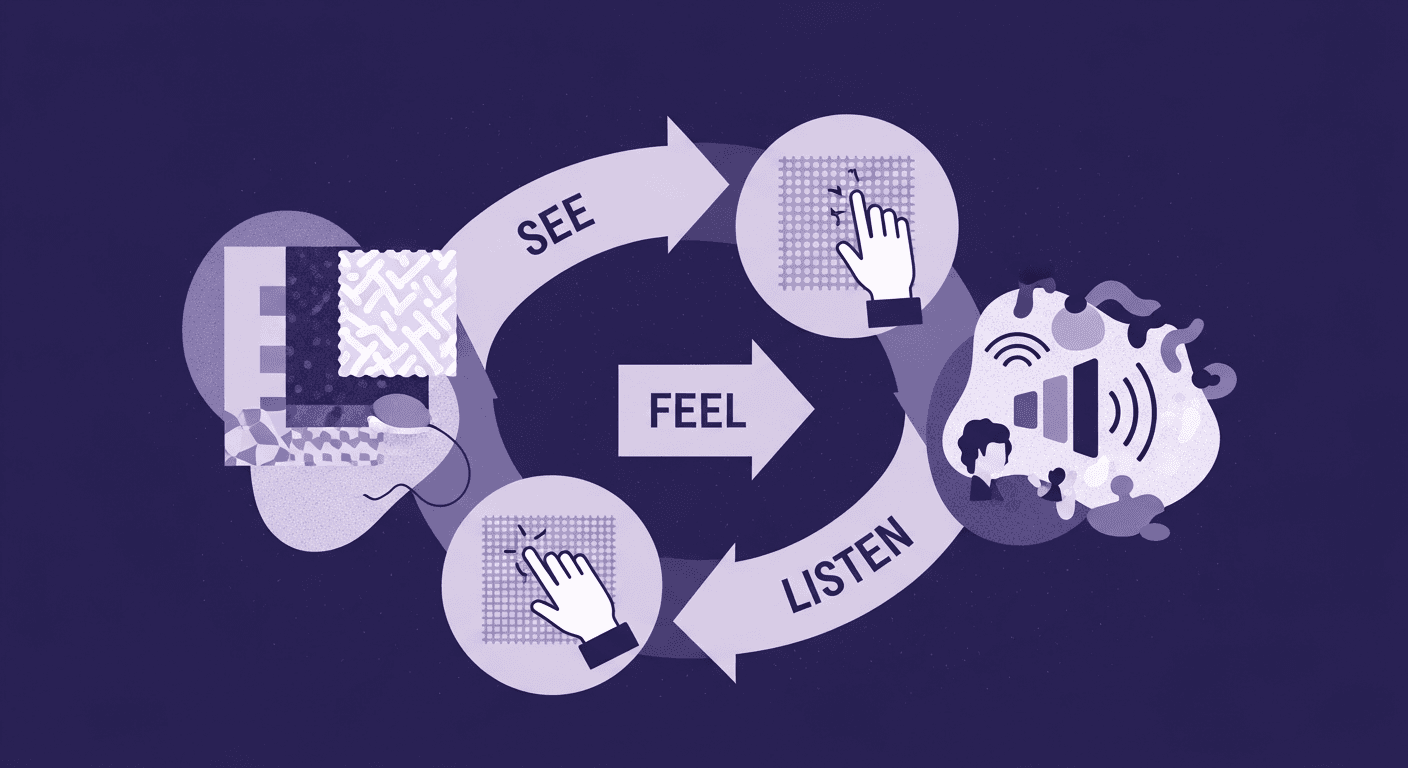The Real Economics Behind 6K Texture Downloads
By Mira Kapoor | 5 November 2025 | 13 mins read
Table of contents
Table of Contents
You found it, the perfect 6K texture for that hero asset. But the number on the checkout page is just the down payment. The real invoice shows up later, buried in slower renders, bloated storage costs, and the quiet friction of an artist’s workflow grinding to a halt. This guide unpacks the full economic story of high-resolution textures, giving you a practical framework for deciding where that detail is a worthy investment and where it’s just an expensive bottleneck. We’ll move beyond the sticker price to compare the real-world costs of subscription services versus individual marketplace purchases, so you can build a smarter sourcing strategy that protects your pipeline, your budget, and your team’s focus.

Why 6K texture download costs matter
Every pixel has a price. In the push for hyperrealism, 6K textures promise stunning fidelity, but they also introduce hidden costs that ripple through production pipelines. Understanding why these costs matter isn’t just about accounting; it’s about control. The smartest teams know that visual excellence is only sustainable when it’s built on financial and technical balance.
The challenge: Balancing quality, speed, and budget
As an artist, you live in a constant state of negotiation. On one side, there’s the push for breathtaking, photorealistic visuals that make players stop and stare. On the other hand, the immovable realities of deadlines, budgets, and technical constraints. High-resolution 6K textures sit right at the heart of this tension. They offer unparalleled detail for hero assets and close-up shots, but they come with a hidden invoice that goes far beyond the initial purchase price.
Most teams think the cost of a texture is the number on the checkout page. They’re right, just not in the way they think. The real cost is a combination of factors that ripple through the entire production pipeline:
- Longer render times: Larger textures mean more data for the GPU to process. This translates directly into slower renders, longer lighting bakes, and more time spent waiting. For a studio, that waiting time is salaried artist time.
- Increased storage needs: A single 6K PBR material can easily exceed 200MB. Scale that across an entire game environment, and your storage requirements and costs balloon. This impacts not just your servers, but also the final game size, a critical factor for player downloads.
- Slower artist workflows: Manipulating massive files in Photoshop or Substance Painter can slow down even high-end workstations. Every moment an artist spends waiting for a file to save or a filter to apply is a moment they aren’t creating.
Understanding 6K texture download costs isn’t just about procurement; it’s about pipeline strategy. It’s about deciding where that extra resolution truly serves the player experience and where it just adds friction. The real challenge is to invest your budget both time and money where it will have the most impact on the screen.
This is where a clear understanding of your purchasing options becomes a strategic advantage, starting with the most popular model for high-volume studios: subscriptions.
The subscription model: Predictable costs for high-volume needs
Subscription-based texture libraries have become the backbone of modern production workflows. They trade ownership for access, offering teams a steady, predictable stream of assets without the friction of individual purchases. But the real question isn’t whether subscriptions save money, it’s how efficiently your team converts that predictability into creative output.
How subscription services structure high-resolution texture pricing
Subscription services are designed around a simple, powerful premise: predictability. For a fixed monthly or annual fee, your team gets access to a vast library of assets. This model is perfect for studios that need a steady stream of high-quality, consistent materials for environments, props, and characters.
But not all subscriptions are created equal. The pricing is typically tiered, breaking down like this:
- Personal/Indie tier: Aimed at individual creators or very small teams. It usually offers a limited number of monthly downloads (e.g., 30-50 credits) for a lower price. Access to the highest resolutions like 6K might be restricted or cost more credits per download.
- Studio/Enterprise tier: Built for professional teams. This tier provides a large pool of monthly credits (often 500+), allows multiple user seats under one license, and grants full access to all available resolutions, including 6K and 8K. The cost is significantly higher, but the cost-per-asset is much lower if you use the credits effectively.
The currency of these platforms is the credit. Think of it this way: one credit might get you a 2K texture, while a 6K PBR material set (with albedo, normal, roughness, etc.) could cost 3-5 credits. This system standardizes value across the library, but it also means you need to be mindful of how your team is “spending” its monthly allowance.
Are subscription services more cost-effective for game development?
For many game studios, the answer is a resounding yes with a few important caveats. The model shines when you need volume and consistency.
Pros:
- Predictable budgeting: You know exactly what your texture costs will be each month. This simplifies financial planning and eliminates surprise expenses.
- Access to a vast library: Your artists are never stuck waiting for a specific asset. They can experiment freely, pulling concrete, wood, metal, or fabric textures as needed, which accelerates look development and prototyping.
- Consistent quality and workflow: Assets from a single service (like Megascans or Adobe Substance 3D Assets) are usually created with a consistent PBR methodology. This means less time spent tweaking values and more time creating, ensuring a cohesive look across the game.
Cons:
- The “use it or lose it” problem: If your team has a slow month, those unused credits often don’t roll over. You’re paying for assets you’re not downloading.
- Potential for homogeneity: When every studio pulls from the same popular library, there’s a risk of your game’s environments looking a bit too familiar. The most unique, standout assets are often found elsewhere.
- Long-term commitment: The best pricing is almost always tied to an annual commitment. If your project needs a shift, you’re locked in.
A subscription is your workhorse. It builds the foundation of your world. But for those special, one-of-a-kind hero assets, you might need a different approach: the à la carte marketplace.
The marketplace model: One-time purchases for specific assets
When your project demands something distinct, an alien alloy, a weathered temple stone, a signature look, no library offers the open marketplace becomes your best ally. Here, every purchase is a deliberate choice, each material an investment in uniqueness. This is where craftsmanship meets curation, and individuality often comes with a premium.
Navigating professional texture marketplace costs
While subscriptions offer a buffet, marketplaces like ArtStation, Gumroad, or FlippedNormals are the à la carte menu. Here, you buy assets one by one, giving you complete control over what you acquire. This is the ideal solution when you need a very specific material like the corroded, alien metal for a boss’s armor or the hand-painted, stylized bark for a fantasy forest.
So, how much do 6K textures cost for game development on these platforms? The high-resolution texture pricing can vary wildly, but here’s a general breakdown:
- Typical price range: A single 6K PBR material set often falls between $10 and $50. Simpler patterns might be at the lower end, while complex, procedurally generated, or meticulously scanned materials command a higher price.
Several factors influence these professional texture marketplace costs:
- Artist reputation: A well-known artist with a reputation for flawless, production-ready assets can charge a premium.
- Complexity and uniqueness: A generic brick texture will cost less than a highly specific, intricately designed sci-fi paneling material.
- Included maps and features: A basic package includes albedo, normal, and roughness maps. Premium packages may include ambient occlusion, displacement, metallic, and even Substance graphs (.sbsar files) for ultimate customization, justifying a higher cost.
When to choose à la carte over subscription
The marketplace model isn’t a replacement for a subscription; it’s a powerful supplement. It excels in situations where specificity is key.
Pros:
- Pay only for what you need: There are no wasted credits or monthly fees. If you only need five unique textures for a project, you only pay for five.
- Greater asset ownership: Once purchased under the appropriate license, the asset is yours to use in perpetuity for that project. There are no recurring fees to maintain access.
- Access to niche and stylized assets: Marketplaces are a treasure trove of unique content that you won’t find in mainstream subscription libraries. This is where you find the assets that give your project its distinct character.
Cons:
- Costs can escalate quickly: If you find yourself needing dozens of assets, the individual costs can quickly surpass what you’d pay for a monthly subscription.
- Inconsistent quality: Quality control can vary from vendor to vendor. One artist’s PBR values might be perfectly calibrated, while another’s might require significant tweaking, costing your team valuable time.
Choosing between these two models is only half the battle. The single most important and often overlooked factor is the legal fine print that governs how you can actually use what you buy.
The decisive factor: Comparing texture licensing models for 3D artists
Even the best texture is only as valuable as the rights that come with it. Licensing defines how far your creative freedom extends and how much it truly costs. For 3D artists and studios, understanding license terms isn’t a legal afterthought; it’s a core part of production strategy that protects both your assets and your bottom line.
Standard vs. Extended licensing: What you need to know
This is where inattention can lead to serious legal and financial trouble. The license you purchase dictates exactly how you can use a texture. Misunderstanding the terms can invalidate your purchase and put your studio at risk. When comparing texture licensing models for 3D artists, you'll almost always encounter two main types:
- Standard license: This is the default for most purchases. It typically grants you the right to use the texture in a commercial project, like a video game, film, or architectural visualization. The key limitation is that the texture must be part of a larger work; you can't just resell or redistribute the texture files themselves. For 95% of game development use cases, this is what you need.
- Extended license: This license grants you additional rights beyond the standard agreement and, as a result, costs significantly more often 5 to 10 times the price of a standard license. You would need an extended license if you plan to use the texture in a way that allows the end-user to interact with it directly or if it's a core part of a product being sold. Examples include:
- Using a texture on merchandise like t-shirts or phone cases.
- Including the texture files in a game engine template or asset pack you intend to sell on a marketplace.
- Using a texture in a customizable web-based application where users can build their own scenes.
The difference in texture licensing for digital artists is crucial. Using an asset with a standard license where an extended one is required is a breach of contract and can lead to takedown notices or legal action.
Avoiding hidden costs in creative content licensing
Beyond the Standard/Extended divide, another hidden cost trap lurks in the fine print: seat licenses. A license is often sold on a per-seat basis, meaning it is valid for one person. If you buy a $20 texture for your team of five artists, you may actually need to purchase five licenses, turning a small expense into a $100 one.
Many marketplaces and subscription services offer Studio or Team licenses to address this. While the upfront cost is higher, it covers your entire team and ensures compliance. Always check the terms for use. It’s a simple step that can save you thousands of dollars and a massive headache down the line.
With a clear understanding of the models and the licensing, you can now build a truly effective sourcing strategy.
A strategic framework for cost-effective texture acquisition
Balancing creativity and cost starts with a plan. A deliberate acquisition framework transforms texture sourcing from an ad-hoc expense into a scalable system. By mapping resolution needs, project scope, and platform targets, teams can build a library that maximizes visual quality while keeping budgets predictable and workflows lean.
Conducting a cost-benefit analysis of texture resolutions
Not every asset needs to be 6K. The decision to use a high-resolution texture should be a deliberate choice, not a default setting. A smart artist knows that the most valuable resource is focus, and you should focus your texture budget on the assets players will actually notice.
Before you download, ask these questions:
- How close will the camera get? A 6K texture is essential for a “hero” prop that the player inspects up close. For a piece of rubble on the ground that the player runs past, 4K or even 2K is often more than enough and saves performance.
- How large is the asset on screen? A massive cliff face that fills the screen might benefit from 6K detail. A small rock in the distance won’t.
- What is the target platform? A high-end PC with a 4K monitor can render stunning detail. A mobile device or a console running in performance mode will compress that detail away, making the extra cost and file size a complete waste.
The ROI of a 6K texture is highest on assets that are central to the player's experience. For everything else, using a lower resolution is one of the easiest ways to optimize your pipeline and your budget.
Building your studio’s texture sourcing strategy
So, what’s the right answer? Subscription or marketplace? 6K or 4K? The best strategy isn't choosing one, it's creating a hybrid approach that leverages the strengths of each model.
Here’s a framework for building your studio’s playbook:
- Subscribe to the foundation: Use a studio subscription for your core library. This covers 80% of the assets you’ll need for general environment art: concrete, wood, metal, plaster, and ground textures. This ensures consistency and gives your artists the freedom to prototype without worrying about individual costs.
- Go to marketplaces for character: When you need a standout asset that defines a scene or a character, turn to marketplaces. This is where you’ll find that unique, signature material that makes your world feel distinct. Budget for these purchases on a per-asset basis.
- Establish resolution guidelines: Create clear guidelines for your art team on when to use 6K, 4K, and 2K textures. Tie these guidelines to asset types (Hero Props, Environment Assets, Background Elements) to remove guesswork and ensure efficiency.
When budgeting for texture downloads, creators should consider these factors:
- Project scope: How many unique environments and assets are you building?
- Art style: Photorealistic styles demand higher-resolution source material than stylized aesthetics.
- Team size: Factor in the cost of per-seat licenses for any marketplace purchases.
- Contingency fund: Always set aside a portion of your budget for unexpected needs that perfect texture you didn’t know you needed until the last minute.
By treating texture acquisition as a core part of your production strategy, you move beyond simply buying assets. You start making smart, informed investments that balance world-class visuals with the practical demands of shipping a game on time and on budget.
From procurement to production strategy
Ultimately, the conversation about 6K textures isn’t really about cost, it’s about strategy. Viewing texture acquisition as a line item on a budget is the old way of thinking. The real shift happens when you see it as the starting point of your entire visual supply chain, where every choice has a ripple effect on artist time, render queues, and final performance.
The goal isn’t just to buy assets; it’s to build a smart, hybrid sourcing model that gives your team exactly what they need, when they need it. Use subscriptions for the foundational 80% and turn to marketplaces for the unique 20% that gives your project its soul. By setting clear resolution guidelines, you’re not limiting creativity; you’re channeling your resources into the details that players will actually see and feel.
You’ve got the framework. You know the right questions to ask. You’re no longer just procuring assets; you’re architecting the visual economy of your game. Now go make the smart investments that free your team to build something unforgettable.

Mira Kapoor
Mira leads marketing at Texturly, combining creative intuition with data-savvy strategy. With a background in design and a decade of experience shaping stories for creative tech brands, Mira brings the perfect blend of strategy and soul to every campaign. She believes great marketing isn’t about selling—it’s about sparking curiosity and building community.
Latest Blogs

The Polar Pinch Problem: How VR Artists Solve Texture Distortion
Texture creation
PBR mapping

Max Calder
Dec 24, 2025

When to Ditch Nodes for AI: A Texturly vs. Adobe Substance Workfl...
AI in 3D design
Texture creation

Mira Kapoor
Dec 22, 2025

The See-Feel-Listen Method That Decodes Any Fabric Texture
Fabric textures
Texture creation

Max Calder
Dec 19, 2025
